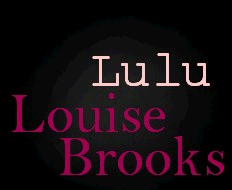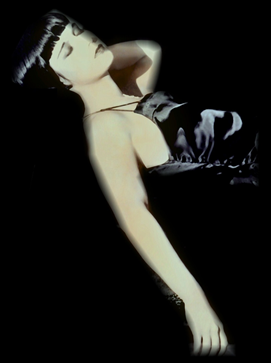
c. 2019
![]()
Louise Brooks was a twentieth century icon. To modern fans, her hair is possibly her most enduring feature—that black helmet fashion magazines still call the "Louise Brooks Bob." She was extraordinary beautiful, appearing on film as a luminous icon. But her legacy is deeper and far more complex than that. She was modern without trying—a "Method actor" before the Method even existed.
During the late 1920's, the modern dancer and Ziegfeld girl inspired both the long running comic strip Dixie Dugan as well as the stage play Show Girl. In 1927, according to biographer Barry Paris, Louise Brooks was the fourth most written about actress in national magazines—after Clara Bow, Joan Crawford and Colleen Moore.
Brooks' career in Hollywood is overshadowed by what is certainly her best-known role, as "Lulu" in the classic German film, Pandora's Box (1929). Under the direction of G. W. Pabst, Brooks' subtle, erotically-charged style of acting emerged. Upon its release, the film largely failed in Germany and was barely reviewed in the United States. Brooks' style was so natural that critics complained she either couldn't or didn't act. Today, Pandora's Box is considered a landmark of the silent cinema.
Brooks made two other films in Europe, Diary of a Lost Girl (1929), again with Pabst, and Prix de Beauté (1930), an early French silent/sound hybrid. With the promise of work in Europe, Brooks had quit Paramount in an act of defiance. Upon her return to the United States, she spurned the offers that made stars of such leading ladies as Jean Harlow and Mae Clark. Soon she was relegated to supporting roles in B-movies.

...Her keen intelligence, rebellious nature and self-destructive streak all contributed to her exile from Hollywood—and what might have been one of the great careers in film history. Brooks' last movie was Overland Stage Raiders (1938), a pedestrian western serial with John Wayne. They didn't even let her keep her signature bangs.
After years of obscurity, poverty, and near-degradation, a new Louise Brooks began to emerge in the '50s when international cineastes started to celebrate her work. Then in the '60s and '70s, her brilliant, thoughtful (if not necessarily completely accurate) essays appeared in magazines like Sight and Sound, Film Culture, and Focus on Film, and The New Yorker. Once derided as a brainy show-girl, Brooks' second career as an insightful writer took shape. In 1982, a bestselling and widely lauded collection of her work appeared under the title Lulu in Hollywood.
In the years since her death, numerous cinematic, literary, musical, cartoon and dramatic homage have been paid the actress. Brooks' reputation has come full circle. Certainly her contribution to the art of cinema is undeniable. That she didn't go on to multiple-decade screen success is a tragedy. But it wasn't for lack of desire. In the '70s she was quoted in an interview, her lack of defensiveness readily apparent: “How I have existed fills me with horror. For I have failed in everything. And I do not excuse myself with the usual escape of ‘not trying.’ I tried with all my heart.”—Louise Brooks, 1973
With thanks to the Louise Brooks Society.
